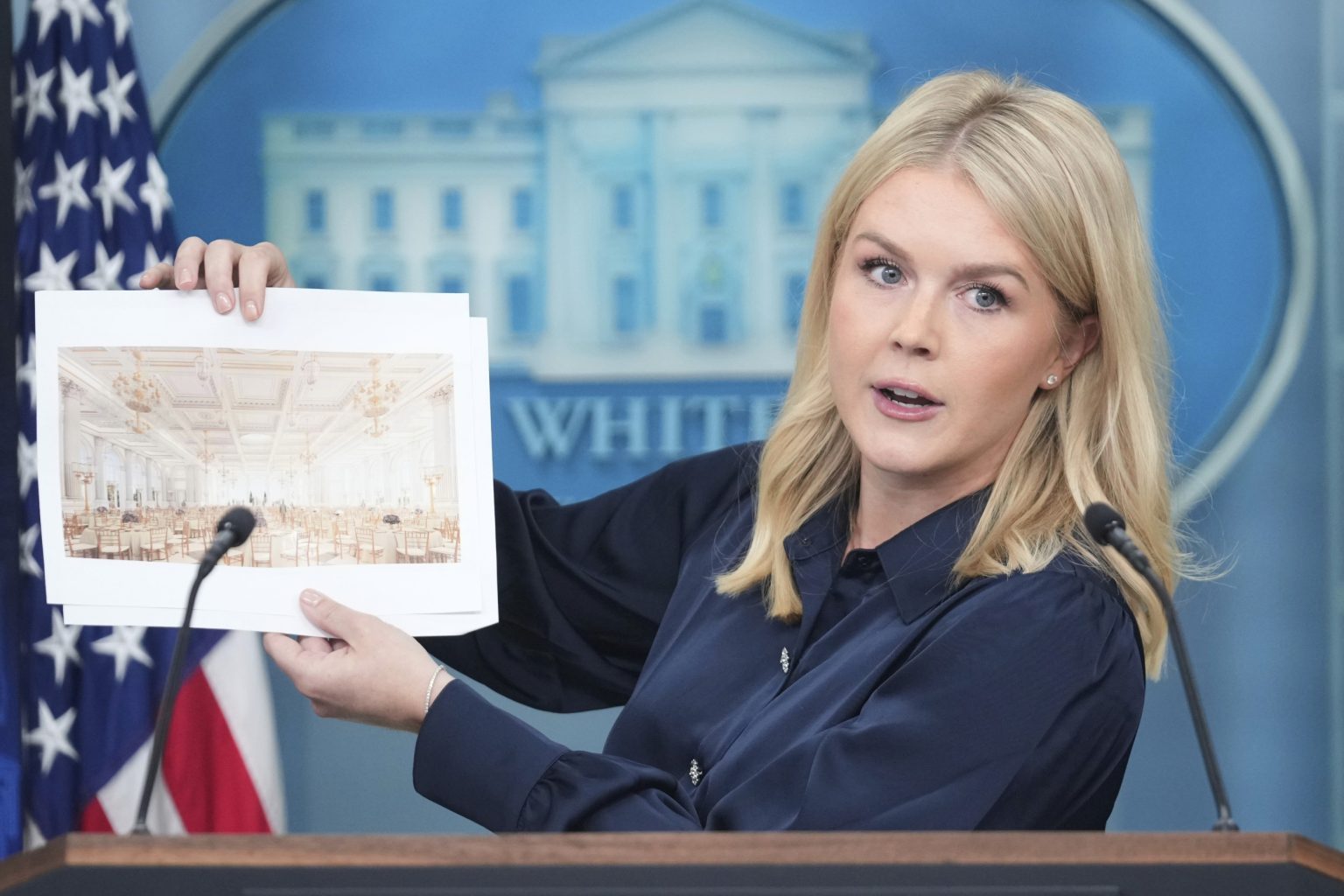Trump’s White House Ballroom Expansion: A Historic Transformation
In a notable shift from the initial plans, President Donald Trump announced that the new White House ballroom currently under construction will accommodate 900 people—a significant 40 percent increase from the original 650-person capacity. This announcement came during a telephone interview with NBC News as construction equipment began work on the $200 million project, which represents the most substantial alteration to the White House exterior in over 80 years. The scene of heavy machinery at America’s most iconic residence signals the beginning of a transformation that will reshape how future administrations host state functions and diplomatic events, eliminating what Trump has long criticized as the “undignified” temporary tents traditionally erected on the South Lawn for large gatherings.
The expansive 90,000-square-foot ballroom is being constructed adjacent to the East Wing, which has historically housed the First Lady’s offices and staff. These functions will be temporarily relocated during the construction period, with White House Press Secretary Karoline Leavitt emphasizing that “nothing will be torn down” during the process. Interestingly, when reporters asked Trump about his emotional state following the recent murder of his ally Charlie Kirk, the President briefly acknowledged the question before immediately pivoting to highlight the ballroom construction, noting that such an addition had been desired “for about 150 years.” This response highlights Trump’s characteristic focus on tangible accomplishments and physical development projects even amid personal loss.
As a former real estate developer, Trump has taken an unusually hands-on approach to this legacy project, personally selecting McCrery Architects to lead the design, with Clark Construction handling the building process and AECOM managing engineering aspects. The President’s decision to expand the capacity addresses his long-standing frustration with the White House’s limited event space—currently, the East Room can only accommodate approximately 200 guests, a constraint Trump finds unsuitable for a building of such international significance. In discussing the project, Trump has emphasized that the new structure will maintain “total respect” for the historic mansion, being positioned “near it but not touching it,” suggesting a careful balance between modern functionality and historical preservation.
“We’re making it a little bigger. It will be top of the line, as good as it can get anywhere in the world,” Trump told NBC News, revealing his vision for a world-class venue. This sentiment was echoed by White House Chief of Staff Susie Wiles, who noted that “President Trump is a builder at heart and has an extraordinary eye for detail,” while emphasizing the administration’s commitment to preserving the White House’s special history while creating a beautiful space for future generations. Jim McCrery, CEO of McCrery Architects, added historical context by pointing out that “Presidents in the modern era have faced challenges hosting major events at the White House because it has been untouched since President Harry Truman,” framing the project as both necessary and overdue.
The ballroom represents more than just additional square footage—it embodies Trump’s desire to leave a permanent mark on the presidency and the physical landscape of American governance. By expanding the White House’s capacity to host large events on-site rather than in temporary structures, the project reflects Trump’s belief that America’s presidential residence should project permanence and grandeur befitting its status. The construction site, visible to the public and media, has become a physical manifestation of Trump’s preference for concrete accomplishments over symbolic gestures. The timing of this announcement—coming amid national attention on the tragic death of a political ally—also demonstrates Trump’s tendency to advance forward-looking narratives even during moments of reflection or mourning.
With construction now underway, the ballroom faces a four-year timeline with completion targeted for early 2029—extending beyond Trump’s current term. This schedule raises questions about whether the project might be altered or reconsidered by a potential future administration with different priorities or aesthetic preferences. However, the substantial investment and public commitment suggest the project has momentum that would be difficult to redirect. As trucks and heavy machinery transform the White House grounds, they represent not just a construction project but a statement about presidential legacy and the evolving function of America’s most famous address. When completed, the ballroom will stand as the most significant physical addition to the White House in generations, changing both how the building appears and how it serves its ceremonial functions in American democracy.


